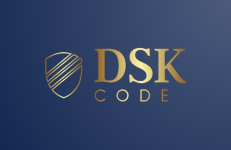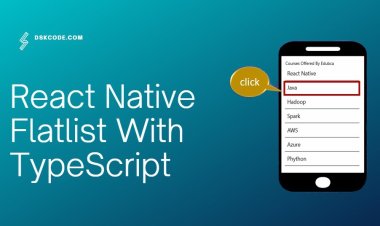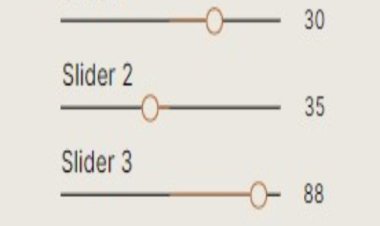Carbon Programming Language
Carbon is a powerful programming language that helps developers create complex applications quickly and easily. With its unique syntax and powerful features, Carbon is the perfect choice for any project.

Introducing the carbon programming language
Carbon is a new programming language designed for the 21st century. It is based on the idea that code should be easy to read and understand, and that programs should be able to run on any platform.
The syntax of Carbon is inspired by the C programming language, but it is designed to be more readable and concise. For example, the following Carbon program prints the string 'Hello, world!' to the console:
println('Hello, world!')
Carbon is statically typed, meaning that all variables must be declared with a specific type before they can be used. This helps to prevent errors and makes the code easier to understand.
Carbon programs can be compiled to native code or to JavaScript, making them compatible with any platform. The Carbon compiler is open source and available for Windows, macOS, and Linux.
If you're looking for a new programming language to learn, give Carbon a try. It's easy to get started, and you'll be surprised at how quickly you can write programs that are easy to read and understand.
The features of carbon that make it unique
Carbon is one of the most versatile and important elements on Earth. It is the basis of all known life, and it is essential to the functioning of many important chemical processes. Carbon is unique in its ability to form strong bonds with a wide variety of other elements. This property makes it an ideal material for many industrial and commercial applications.
Carbon is the basis of all known life. This element is essential to the functioning of many important chemical processes. Carbon is unique in its ability to form strong bonds with a wide variety of other elements. This property makes it an ideal material for many industrial and commercial applications.
Carbon is found in a variety of forms on Earth. The most common form is graphite, which is used in pencils and other writing implements. Carbon is also found in coal, which is used as a fuel source. Diamonds, another form of carbon, are used in jewelry and other decorative items.
The different forms of carbon are created by the different arrangements of atoms in the element's structure. The different forms of carbon have different properties. For example, graphite is a good conductor of electricity, while diamond is an excellent insulator.
Carbon's ability to form strong bonds with other elements is what makes it such a versatile material. Carbon can bond with hydrogen, oxygen, nitrogen, and other elements to create a wide variety of compounds. These compounds are used in many different industries, including the food, pharmaceutical, and chemical industries.
Carbon is also an important element in the steel industry. Steel is made by combining iron with carbon. The carbon gives the steel its strength and hardness.
Carbon is found in a variety of minerals. The most common minerals that contain carbon are coal, petroleum, and natural gas.
The benefits of carbon programming
Carbon programming is a great way to create programs that run quickly and efficiently. It also allows for easy integration with other languages, making it a great choice for those looking to create cross-platform applications.
The applications of carbon programming
Carbon programming is a relatively new area of computer programming that makes use of the carbon dioxide emissions data from power plants to create useful applications.
The first application of carbon programming was created by a team of students at the University of Michigan in the United States. This application, called 'CO2balance', allowed people to input their own emissions data and then see how their emissions compared to the average emissions of other people in their area.
The CO2balance application was followed by the development of other applications that use carbon dioxide emissions data. One such application is 'Emissions Explorer', which was developed by the Environmental Defense Fund. This application allows users to input their ZIP code and then see a map of the power plants in their area and the corresponding emissions data.
Other applications of carbon programming include 'Eco-footprint' and 'Climate Cents'. Eco-footprint is an application that allows users to input their own emissions data and then calculate their ecological footprint. Climate Cents is an application that allows users to input their ZIP code and then see how much their emissions are costing the taxpayers in their state.
The applications of carbon programming are varied and continue to grow as the field of computer programming evolves. The potential for carbon programming to help people reduce their emissions and save money is great. As more people become aware of the applications of carbon programming, it is likely that the use of these applications will increase.
The future of carbon programming
Programming with carbon is likely to become more popular in the future as the world increasingly moves to a low-carbon economy. Carbon programming is a way of using computer code to control and optimize the use of carbon-based resources. This can include anything from reducing the carbon footprint of a company to developing new carbon-neutral technologies.
There are a number of reasons why carbon programming is likely to become more popular in the future. Firstly, as the world moves to a low-carbon economy, there will be an increasing need for businesses and individuals to find ways to reduce their carbon footprint. Carbon programming can offer a way to do this by optimizing the use of carbon-based resources. Secondly, carbon programming can help to develop new carbon-neutral technologies. This is important because, as the world moves to a low-carbon economy, it will be necessary to find ways to replace carbon-intensive technologies with cleaner alternatives.
Thirdly, carbon programming is likely to become more popular because it offers a way to make money from carbon credits. Carbon credits are a way of trading carbon emissions, and they are expected to become increasingly important as the world moves to a low-carbon economy. businesses that are able to reduce their carbon emissions can sell their carbon credits on the open market, and this can provide a valuable source of income.
Fourthly, carbon programming is likely to become more popular because it can help to create jobs. As the world moves to a low-carbon economy, there will be a need for more people with the skills to develop and operate carbon-neutral technologies. This will create new job opportunities for people with the right skills.
Finally, carbon programming is likely to become more popular because it is an exciting and challenging area of computer programming. Carbon programming offers the opportunity to work on cutting-edge technologies that can have a real-world impact. This is likely to appeal to many programmers who are looking for an exciting and challenging area in which to work.
The challenges of carbon programming
There are many challenges that come with carbon programming. One of the biggest challenges is working with the various carbon budgets that are set by governments and businesses. These budgets can be very strict, and often need to be met in order to avoid penalties. This can make it difficult to find the right balance between emissions reduction and economic growth.
Another challenge is the lack of carbon-neutral technologies. This means that most of the time, carbon emissions need to be offset by planting trees or investing in other carbon-reduction initiatives. This can be expensive and time-consuming, and often requires ongoing investment.
Finally, it can be difficult to engage the public on the issue of carbon emissions. Many people are not aware of the problem, or don’t believe that it’s a problem that needs to be addressed. This can make it difficult to get support for carbon-reduction initiatives.
The potential of carbon programming
Carbon is a versatile element with a long history of use in various applications. Its potential as a programming language has only recently been explored.
Carbon is a natural choice for programming due to its abundance and low cost. It is also one of the few elements that can exist in both its elemental form and as a compound. This makes it possible to create a wide range of programs with different functions.
One potential use for carbon programming is in the development of artificial intelligence. Carbon is well suited for this task due to its ability to store and process large amounts of data. Additionally, carbon-based programs would be able to interface with the human brain more easily than other types of programs.
Another potential use for carbon programming is in the development of nanotechnology. Carbon is an ideal element for this application due to its small size and ability to form strong bonds. Carbon-based programs could be used to create and control nanomachines.
The potential applications for carbon programming are limited only by the imagination. With further research, carbon may become the element of choice for a wide variety of programming tasks.

















